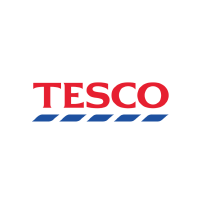Have you ever been on a train and spotted a Tesco train going past? We’re increasingly supporting the environment by using rail to transport products including food and drink, as well as frozen products and clothing.
At Tesco we always want to serve our customers, communities and the planet a little better every day. As part of Tesco rail operations, we started using trains in 2006 to move food, drink, clothing and other products sold into our stores.
These trains solely move products as opposed to any passengers and are known as freight trains. They don’t contain passengers but run along the same train lines as passenger trains, but in a finely balanced timetable so that people and produce can both move around the country.
The service initially launched with servicing stores in Inverness in Scotland, but we now have a network that goes across the UK with nine services connecting England, Scotland and Wales by rail every day.
The terminals served by Tesco trains are in the following locations:
- Daventry Grocery Terminal, Northamptonshire, England is operated by Tesco and acts as a consolidation point for F&F clothing, general merchandise, and slow-moving grocery products.
- Tilbury, Essex, England
- Cardiff, Wales
- Doncaster, South Yorkshire, England
- Teesport, North Yorkshire, England
- Mossend, Scotland
- Aberdeen, Scotland
- Inverness, Scotland
The rail service is taking vehicles off the road and makes sure that the shelves in our Tesco stores are stocked with all the products our customers want and need. The increasing use of trains improves our transport logistics and supports sustainability and the environment. Moving Tesco further towards meeting our Climate Change Strategy commitment.
The increasing use of trains improves our transport logistics and supports sustainability.
The trains are 752 metres long which is as long as 72 double decker buses, so it’s vital to be able to take the products off the trains at a terminal and put more back on quickly. It is an impressive feat but one which keeps the whole operation running smoothly.
Across the entire operation, there are 919 Tesco containers which can be packed with products. Tesco rail moves a wide range of products including general household, garden products and clothing. Additionally, the typical supermarket items like fresh and packaged food as well as drinks are also transported.
Currently, up to 12% of everything sold in Tesco stores could have been transported by rail, but we are working to see how we can use more of the 9% available capacity on the trains to grow this even further by linking our supply base to our distribution network.
Frozen foods can also now be transported by special refrigerated containers called reefers. Some things like fresh fruit, vegetables and salads are able to be moved directly from suppliers to Tesco warehouses by train to ensure they stay as fresh as possible. 133 Tesco stores receive direct deliveries from the rail network which directly reduces the number of lorries needed on the roads heading to Tesco stores.
- Once a train arrives at a terminal, it takes just two hours to unload and restock the containers of products using three rail tracks, and up to 30 tons can be lifted at each facility using a piece of machinery called a reach stacker.
- 1.2 million kilometres are travelled by Tesco rail services each year which is the same distance as travelling the circumference of the earth, from pole-to-pole 30 times.
- Up to seven million cases can be moved in a week which could equate to seven million 24-can packs of fizzy drinks.
It is environmentally positive to move products by train instead of on the road. Research in 2021 from the Rail Delivery Group (link in further information), an organisation that works on behalf of the rail industry, showed that in the UK a typical freight train has the potential to take up to 76 heavy goods vehicles such as lorries off the roads, and by transporting goods by rail less than a quarter of the emissions of a diesel road journey are produced.
Tesco is moving supermarket food on the largest scale of any UK grocer
Tesco was one of the first supermarkets to move products by rail and is moving supermarket food on the largest scale of any UK grocer. It is more carbon efficient moving these products by train, also known as locomotives, with some of them being battery powered. This is only possible where British railways have been electrified to make running electric trains possible, though there is an ambition from Tesco to move from diesel to electric power, particularly for the loading and unloading of the trains.
The trains or locomotives are operated by DRS (or Direct Rail services), and Network Rail who look after all of Great Britain’s railways and infrastructure are pushing to increase the use of rail freight to transport goods. They send Tesco regular updates on the state of the railway and particularly anything that can impact the movement of our trains making crucial deliveries. We also track almost all of our individual containers using tracking devices and computer software so that we can see where in the country (or even sometimes across Europe) our containers of products are.
Download PDF
If you wish to save, or print, this article please use this pdf version »


